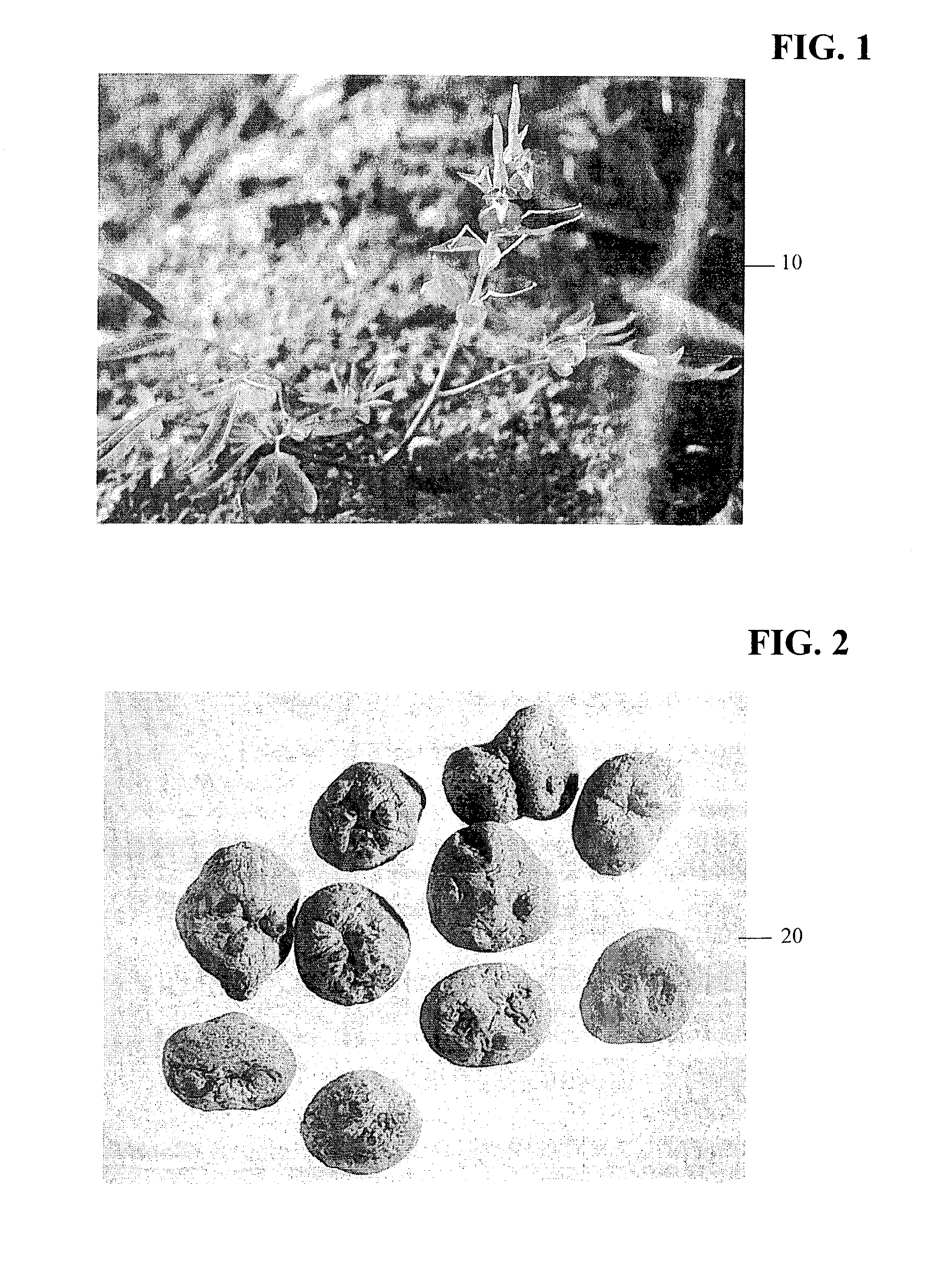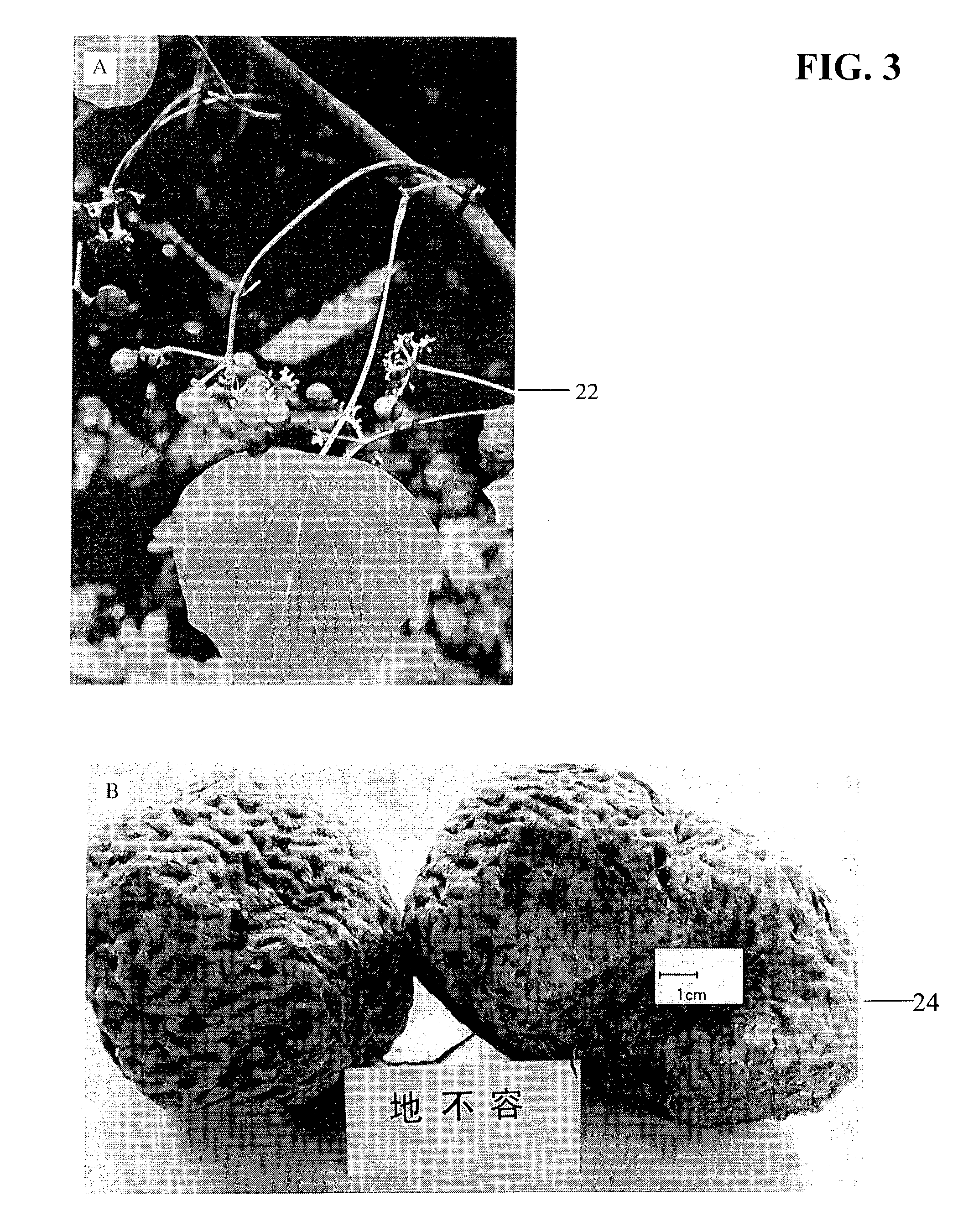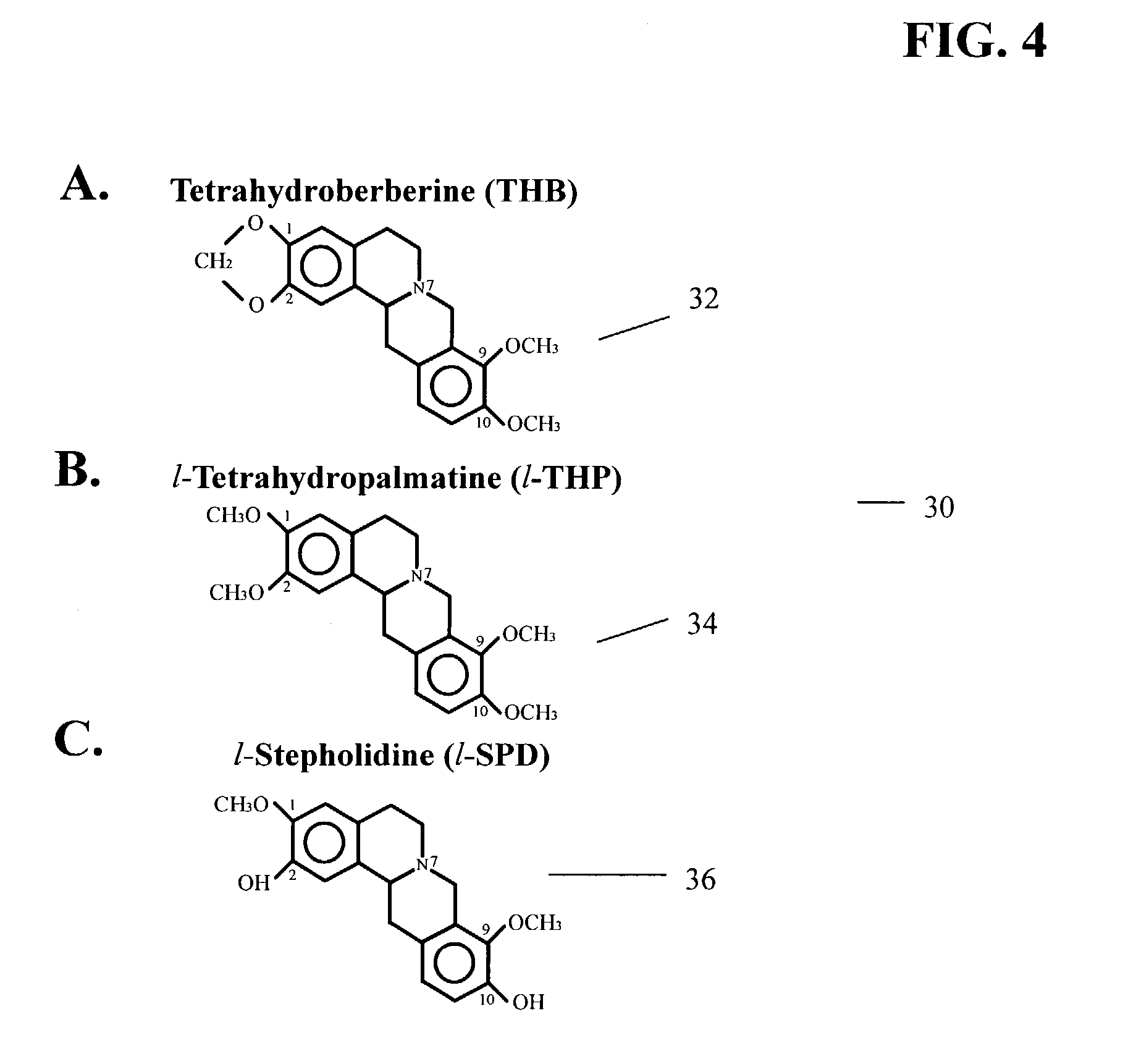Method for decreasing nicotine and other substance use in humans
- Summary
- Abstract
- Description
- Claims
- Application Information
AI Technical Summary
Benefits of technology
Problems solved by technology
Method used
Image
Examples
Embodiment Construction
[0018]This description discloses a method for reducing smoking in humans by treating a human with one of a group of chemical analogs isolated from select genera of the Magnoliidae superorder of plants.
[0019]FIG. 1 is an illustration of one species of Corydalis, specifically, Corydalis ambigua 10. Corydalis ambigua 10 is one species of the Corydalis genus of herbal plants, primarily found in East Asia, namely China, and Japan. Mature Corydalis ambigua 10 is about 150.0 cm in height and about 80.0 cm in width. Corydalis ambigua 10 is a perennial herb. Corydalis is a genus of the Fumariaceae sub-family, the Papoveraceae family, the Papaverales order and the Magnoliidae superorder of plants.
[0020]FIG. 2 is a depiction of the tubers 20 of the Corydalis ambigua plant. While one embodiment specifically refers to using the ambigua species, any species of Corydalis containing tetrahydroberberine (THB) or its analogs may be used. Thus, the term Corydalis refers to all species of Corydalis con...
PUM
 Login to View More
Login to View More Abstract
Description
Claims
Application Information
 Login to View More
Login to View More - R&D
- Intellectual Property
- Life Sciences
- Materials
- Tech Scout
- Unparalleled Data Quality
- Higher Quality Content
- 60% Fewer Hallucinations
Browse by: Latest US Patents, China's latest patents, Technical Efficacy Thesaurus, Application Domain, Technology Topic, Popular Technical Reports.
© 2025 PatSnap. All rights reserved.Legal|Privacy policy|Modern Slavery Act Transparency Statement|Sitemap|About US| Contact US: help@patsnap.com



